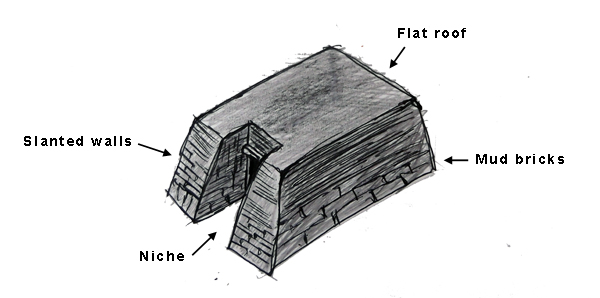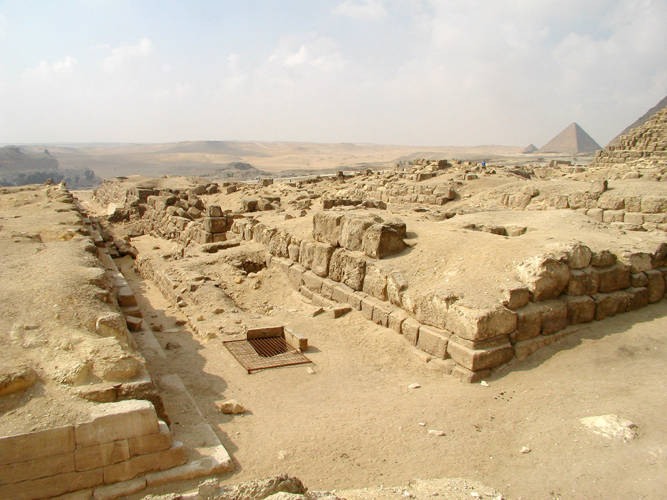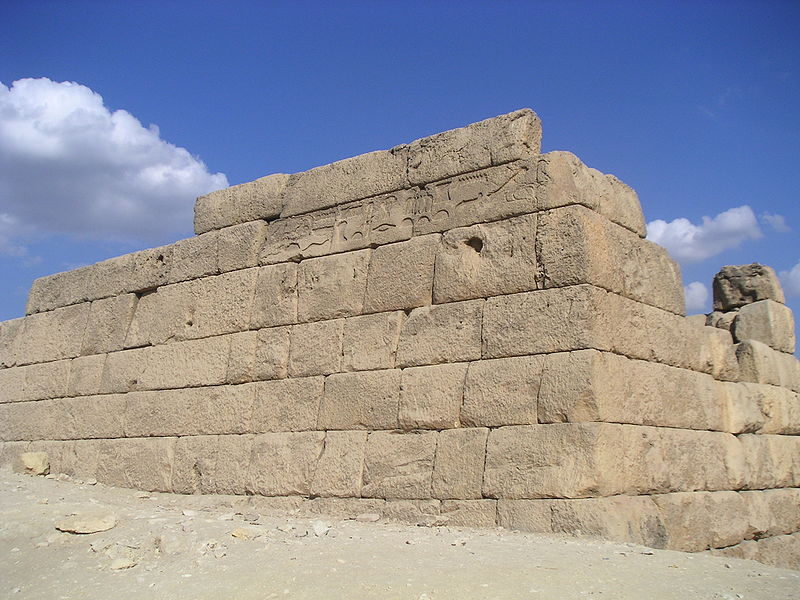Mastaba is a structure, built in ancient Egypt, protecting and marking an underground burial chamber. During the pre-dynastic and early-dynastic period, mastabas were built, to serve as tombs for both kings and the upper class. Later, the kings were buried inside pyramids, while high officials, royalty and king’s relatives continued to built mastabas as their tombs. As a structure, mastaba was a freestanding, rectangular building with inclined sides.

Where the word mastaba comes from
In Arab language mastaba means bench. So the tomb took its name, because of its form, which resembles the brick bench constructed outside and in front of the Egyptian houses, for seating, chatting, relaxing, etc.
Mastaba architecture and decoration
The mastaba was a flat-roofed, one-story, rectangular building with slanted walls. As a structure, it was marking the burial site of an eminent Egyptian and it was about 4 times long as it was wide. Mastabas were first constructed of sun dried mud bricks (available from the Nile river), but towards the end of the third dynasty many incorporated cut stones at least as an exterior facing. Mastaba began as a low, solid rectangular structure, with a small offering chapel, an external niche with a false door, to allow priests and family, bring food and other offerings to the dead. Later mastaba had either an internal serdab (the room were the Ka statue was placed) and a chapel or an attached chapel and serdab. Inside Serdab (from the Persian word cellar) apart from the statue they were stored other things, like cereal, grain and clothes. High up to the walls of the serdab were small opening to allow the soul leave the body and return again. From these openings the statue was not visible. Actually, serdab was completelly hidden inside the masonry for protection. Although, serdab was not visible, the interior walls were decorated with painting or reliefs from daily life.
Mastabas were build with a north-south orientation and were tended to be grouped together in necropolises, on the west bank of the Nile. Egyptians believed that the land of the dead was in the direction of the setting sun and necropolises in ancient Egypt were large cemetaries. Two of the most extended necropolises are at Saqqara and Giza.
Where was the burial chamber?
The burial chamber, with the corps inside the coffin and the sarcophagus, was not placed inside the mastaba but under it, deep into the ground, sometimes even 40 meters under the earth. A vertical shaft, connected the top of the mastaba with this underground chamber. Inside the burial chamber, they were placed apart from the coffin several other goods. The chamber, was lined with stone or bricks. After the burial, the chamber was sealed to remain protected from the thieves. Mastabas might have numerous underground burial chambers to accommodate whole families.
At first both kings and the elite were buried under mastabas. However, in the old Kingdom (about 2686-2181 BC) Kings began to be buried in pyramids, while the rest of the upper class continued to be buried in mastabas for more than a thousand years. The earliest mastabas are found at Tarkhan, Saqqara and Gizeh.
Mastabas in the city of Abydos: During the pre-dynastic and early-dynastic period, in Abydos, both kings and the upper class, were buried under mastabas.
Mastabas in Giza plateau: When the kings started to build pyramids as tombs, the elite continued to be buried inder mastabas. In Giza plateau, hundreds of mastaba tombs have been constructed alongside the pyramids.
Mastaba trombs Saqqara : Here the burial chambers were gradually cut deeper until they passed into the bedrock. Lined with wood, their ceilings were topped with a low mound and then surrounded by a low, rectangular mud-brick building. Most mastabas were filled with storage chambers for grave goods, but this made them vulnerable to thieves. By the end of the 1st Dynasty the superstructure was being reduced in favour of extensive subterranean storage, reached by a stairway. Eventually the mastaba would become a solid, rubble-filled block.
 Mastabas to the east of the pyramid of Khufu (image source: Wikipedia.org)
Mastabas to the east of the pyramid of Khufu (image source: Wikipedia.org)

References
- Cyril Harris, 2005. Dictionary of Architecture and Construction (Dictionary of Architecture & Construction). 4 Edition. McGraw-Hill Professional.
- Joyce Tyldesley. 2011. Development of Pyramids Gallery. [ONLINE] Available at:http://www.bbc.co.uk/history/ancient/egyptians/pyramid_gallery_02.shtml . [Accessed 04 April 14]
- http://www.digitalegypt.ucl.ac.uk/burialcustoms/tombtypes/mastaba.html
- Mastaba. Wikipedia.org
| < Prev | Next > |
|---|




